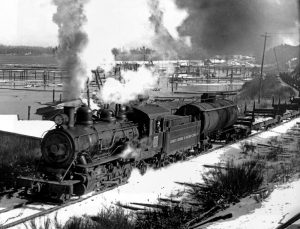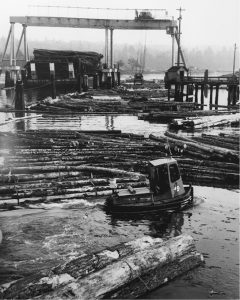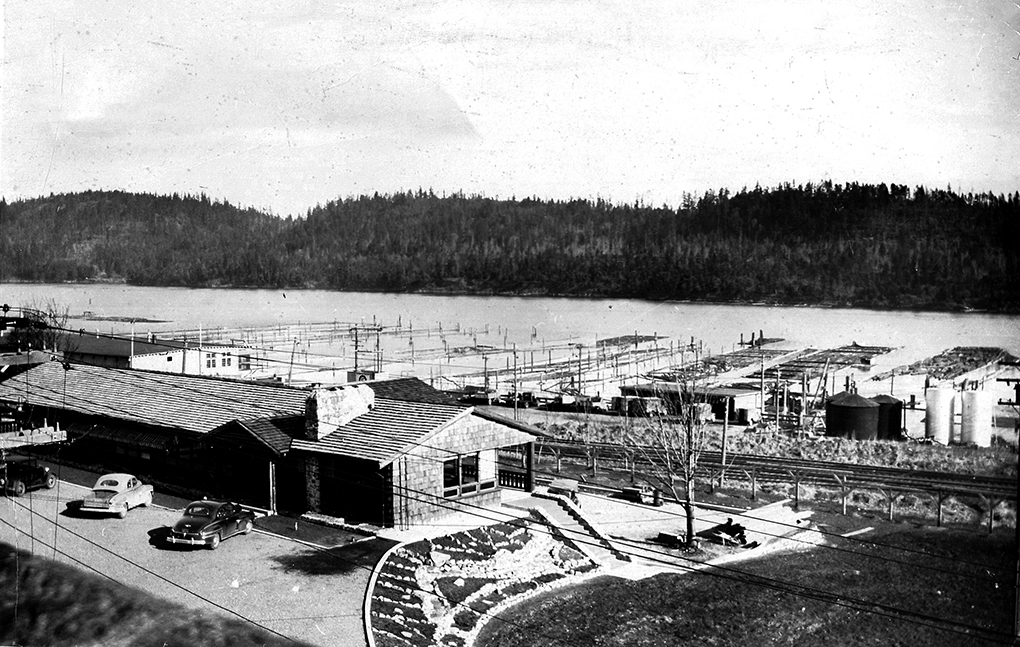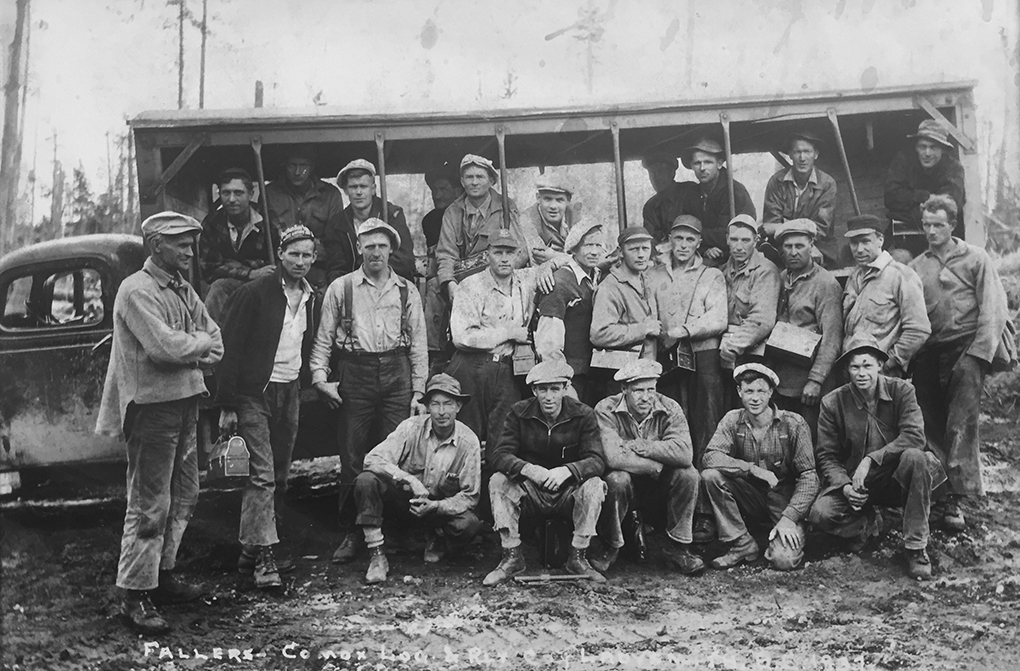From The Mines To The Woods
Ladysmith was a coal town – until the Extension mines closed in 1931. The huge coal bunkers, washery and loading wharves were abandoned. Businesses and hotels closed; most of the townspeople were without work. Families supplemented their larders by hunting and fishing. The town’s population shrank to 1400, and many of its houses were empty. Hard times had hit. The town was dying.
Windfall
Then, in 1933, a freak windstorm blew down a large tract of forest in the hills to the west. This led to the opportunity for the Comox Logging and Railway Company (CL&RCo) to purchase the timber rights. Unusual for the time, the company decided that loggers would live in the town and commute to work each day instead of being housed in transitory bush camps. The town’s former coal miners were hired on as loggers.
Comox Logging and Railway Company (CL&RCo)

Baldwin steam engine #11 pulls empty flat cars from the log dump at Ladysmith Harbour back to Nanaimo Lakes for another load of logs.
Originally a truck logging operation in the hills behind the town, by 1944 the CL&RCo had expanded its land base, was employing over 600 people, had constructed a state-of-the-art custom-designed operations depot and log dump at the harbourfront, and had built a railway to new logging grounds at Nanaimo Lakes, 30 kilometres northwest of town.

A dozer boat manages logs in the Ladysmith Harbour booming grounds. The overhead crane in the background is loading logs onto a barge for shipment to sawmills located on the B.C. Mainland, 1983.
How It Worked
The logs were brought to Ladysmith by rail and dumped into the harbour to be sorted by dozer boats – a Ladysmith invention. At first, the logs were boomed, then later barged, to sawmills on the mainland. This activity continued, through a succession of companies, until 1985 when rail-supported logging operations were shut down – the big old-growth timber at Nanaimo Lakes had all been cut down.

Ladysmith Log Dump. Logs being pushed off flat cars down a slipway into the harbour waters for sorting and transport to a sawmill, 1960s.
Ladysmith had become a logging town with a strong logging culture, some of which is captured in the musical ‘Good Timber: Songs and Stories of the Western Logger’ inspired by Rhymes of a Western Logger by Robert Swanson and his brother Dan. The latter lived in the Travellers Hotel on 1st Avenue in Ladysmith.
Timber Apes of BC (captions available in EN). Enjoy this video with a transcript (EN)
The lumber industry is still important to Ladysmith today. Western Forest Products runs two sawmills at the harbourfront and is a major employer. Logs for the mills are supplied by truck and self-unloading barge from elsewhere around Vancouver Island.


